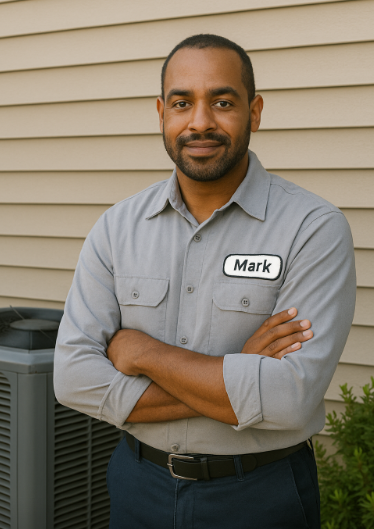When the sweltering summer heat sets in, the comfort of a cool home becomes a top priority. For many homeowners, this means considering a transition from traditional swamp coolers to refrigerated air conditioning systems. But how much does refrigerated air cost, both initially and over time? In this comprehensive guide, we'll delve into the financial aspects of installing and maintaining refrigerated air systems, helping you make an informed decision about your home's cooling needs.
Initial Installation Costs
1. Conversion from Swamp Cooler to Refrigerated Air
Converting an existing swamp cooler to a refrigerated air system is a common upgrade, especially in regions with high humidity where swamp coolers become less effective. The cost of such a conversion can vary based on several factors:
-
Home Size and Layout: Larger homes or multi-story residences may require more extensive ductwork and multiple units, increasing costs.
-
Existing Infrastructure: Homes with outdated or incompatible ductwork may need significant modifications to accommodate a refrigerated air system.
-
System Capacity and Efficiency: Higher SEER (Seasonal Energy Efficiency Ratio) ratings and larger capacity units typically come with higher upfront costs but offer better energy efficiency in the long run.
On average, homeowners can expect to pay between $7,500 and $15,000 for a complete conversion, depending on the complexity of the installation and the specific requirements of the home.
2. New Construction or Replacement Systems
For new homes or when replacing an existing refrigerated air system, the costs can vary widely:
-
Basic Systems: Entry-level systems with lower SEER ratings and standard features may start around $3,000 to $5,000.
-
Mid-Range Systems: Units with higher SEER ratings, better energy efficiency, and additional features typically range from $5,000 to $8,000.
-
High-End Systems: Premium systems with advanced features, smart technology integration, and top-tier efficiency can exceed $8,000, sometimes reaching $10,000 or more.
It's essential to consider the long-term benefits of investing in a more efficient system, as higher upfront costs can lead to significant savings on energy bills over time.
Ongoing Operating Costs
1. Energy Consumption
Refrigerated air systems typically consume more electricity than swamp coolers due to their more complex components and the energy required to cool and dehumidify the air. On average, running a central air conditioner can add between $150 and $300 to your monthly utility bill during the peak summer season.
However, the actual cost will depend on several factors:
-
System Efficiency: Units with higher SEER ratings use less electricity to provide the same amount of cooling.
-
Usage Patterns: The more frequently the system is used and the longer it's running, the higher the energy costs.
-
Climate: In hotter climates, the system will need to work harder and longer, increasing energy consumption.
2. Maintenance and Repairs
Regular maintenance is crucial to ensure the efficiency and longevity of your refrigerated air system. Annual tune-ups typically cost between $100 and $200 and include services such as:
-
Cleaning and inspecting coils
-
Checking refrigerant levels
-
Inspecting and replacing filters
-
Lubricating moving parts
Neglecting maintenance can lead to higher energy bills and costly repairs down the line.
3. Refrigerant Costs
Over time, your system may lose refrigerant due to minor leaks or normal wear and tear. Recharging the system with refrigerant can cost between $200 and $640, depending on the type of refrigerant used and the amount needed. (This Old House)
It's important to address any refrigerant issues promptly, as low refrigerant levels can reduce system efficiency and potentially damage the compressor.
Factors Influencing Overall Costs
Several factors can influence both the initial and ongoing costs of refrigerated air systems:
-
Climate: In regions with high humidity, refrigerated air systems are more effective and necessary, but they also tend to have higher operating costs.
-
Home Insulation: Well-insulated homes retain cool air more effectively, reducing the workload on your air conditioning system and lowering energy bills.
-
System Age and Condition: Older systems may be less efficient and more prone to breakdowns, leading to higher maintenance and repair costs.
-
Utility Rates: Electricity rates vary by region and can significantly impact the cost of running your air conditioning system.
Long-Term Financial Considerations
While the initial investment in a refrigerated air system can be substantial, it's essential to consider the long-term financial benefits:
-
Energy Savings: Higher SEER-rated units consume less electricity, leading to lower monthly utility bills.
-
Increased Home Value: Homes with modern, efficient cooling systems can have higher resale values.
-
Health Benefits: Refrigerated air systems provide better humidity control, which can improve indoor air quality and comfort.
-
Reduced Maintenance Costs: Newer systems often require less frequent and less expensive maintenance.
Conclusion
Investing in a refrigerated air system involves a significant upfront cost, but the long-term benefits—such as energy savings, increased home value, and improved comfort—can make it a worthwhile investment. By understanding the factors that influence both initial and ongoing costs, you can make an informed decision that aligns with your budget and cooling needs.
If you're interested in exploring AC options with environmentally- friendly refrigerants, check out the Goodman 3-Ton 14.5 SEER2 R32 Bundle. For more detailed information and personalized estimates, it's advisable to consult with a licensed HVAC professional who can assess your specific situation and provide tailored recommendations.







